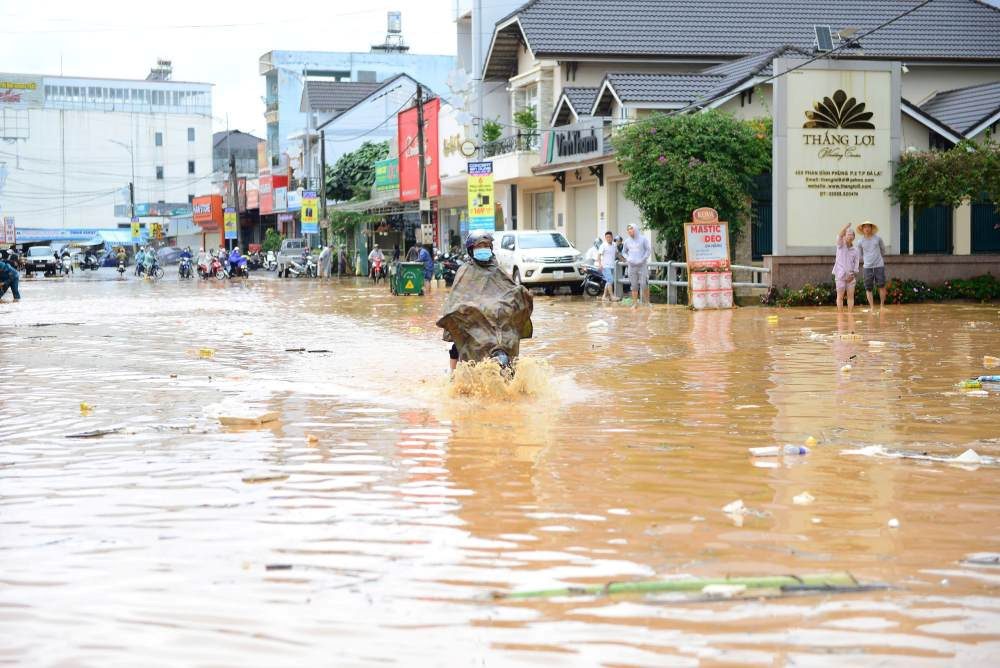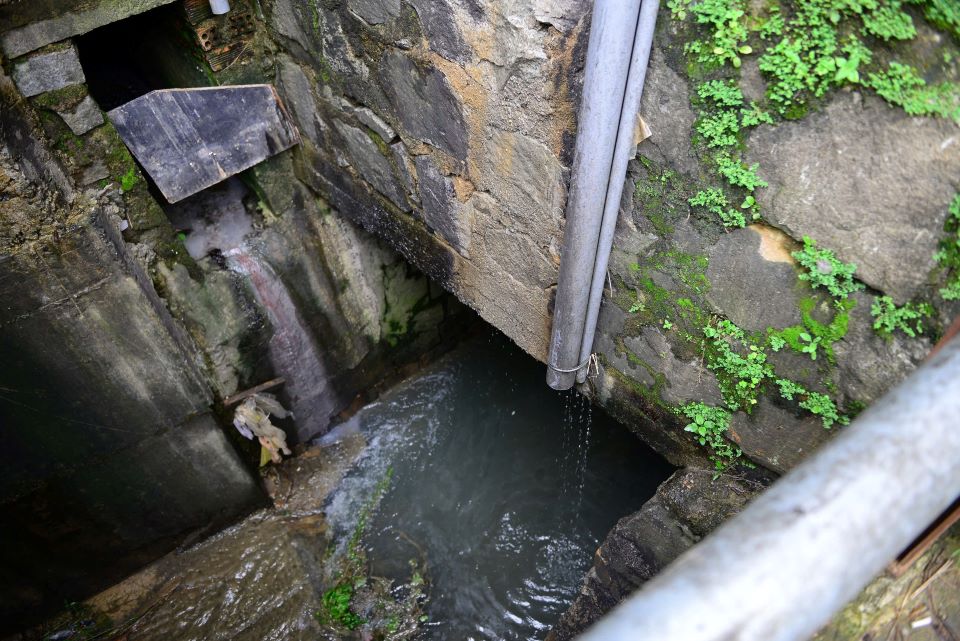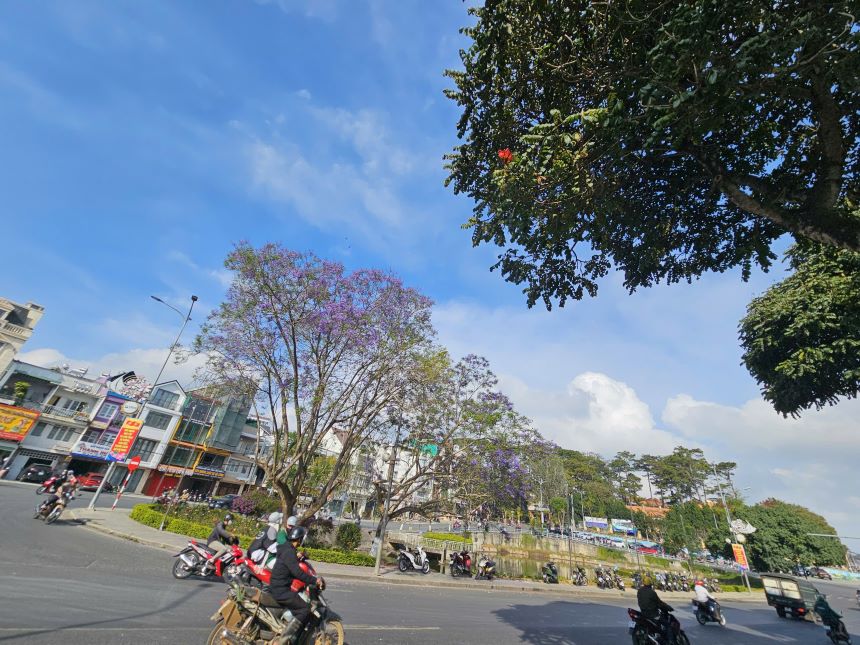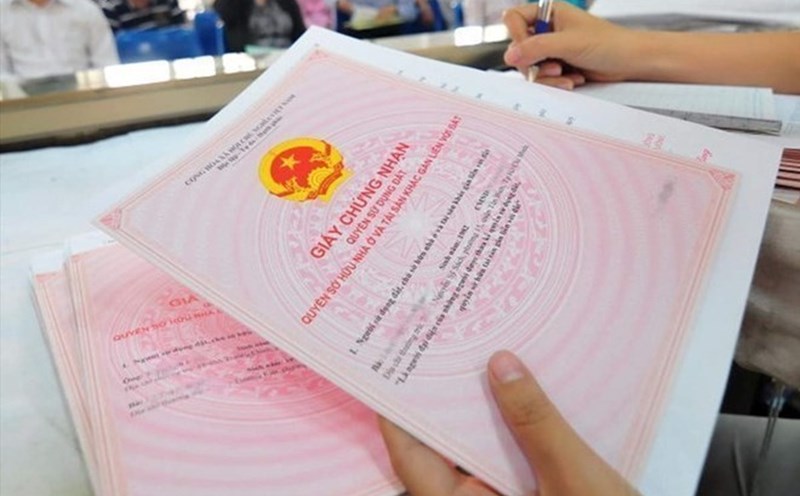When the plateau is flooded
Located at an altitude of 1,500m above sea level, in recent years, Da Lat and Lam Dong areas have been facing local flooding when rain appeared.
For example, on September 10, a heavy rain suddenly fell on Xuan Huong - Da Lat ward. Water from upstream rushed in, causing many central roads of this ward such as Phan Dinh Phung, To Ngoc Van, Hai Thuong, Nguyen Thi Nghia planning area, etc. to be deeply flooded.
Within 10 minutes, the water rose to 1.6m, flooding into the homes of dozens of households. Mr. Le Tuan Anh, residing in Xuan Huong ward - Da Lat, recounted: "I tried to close the door, but the pressure of the water was too great, causing three glass windows to break, causing damage to furniture and electrical equipment in the house".

The image of the urban area on the windy plateau suddenly turning into a river in a flash has become a constant worry every rainy season.
Because Da Lat is located on steep terrain, surrounded by a natural stream system. However, the urbanization rate is too fast, ponds and streams are narrowed or encroached, significantly reducing drainage.

According to the Department of Construction of Lam Dong province, the localized flooding in the inner city in recent years has stemmed from many causes. The drainage system has not been invested in synchronously, many items are seriously degraded.
In addition, some sections of canals and streams were illegally built, obstructing the flow. With just a heavy rain, the entire amount of water poured into low-lying areas, unable to drain in time, immediately creating a "water sea" in the heart of the inner city.
Need for fundamental solutions
The situation of local flooding in the inner city of Da Lat is currently of concern to Lam Dong province. Recently (September 25), at a working session with departments, branches and project management boards to discuss the medium-term public investment plan for the 2026-2030 period, the leaders of Lam Dong Provincial People's Committee emphasized this issue.
That is, it is necessary to prioritize urban beautification, upgrading traffic infrastructure and drainage systems to prevent local flooding in the Da Lat area. This is considered a very important move to solve the problem that has haunted for many years.

For Da Lat people, sudden rains have become a familiar part of the highland climate. But no one wants to get used to the constant flooding.
Keeping Da Lat dry and fresh not only protects people's lives, but also protects the tourism brand, preserves the identity of Da Lat, a place likened to "Miniature Paris" in the highlands.
To do this, Da Lat needs a fundamental, long-term strategy to prevent flooding. In particular, it is necessary to restore and protect natural streams, minimizing encroachment and leveling of ponds and lakes. Along with that is the investment in a synchronous drainage system, capable of receiving and distributing heavy rainfall...











